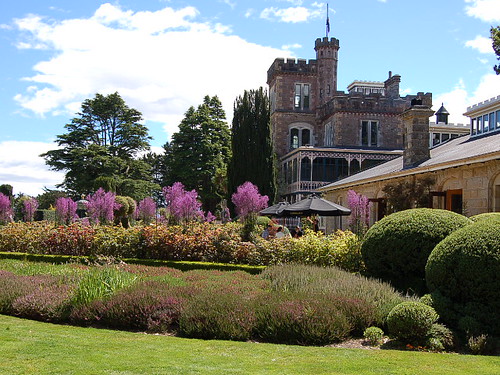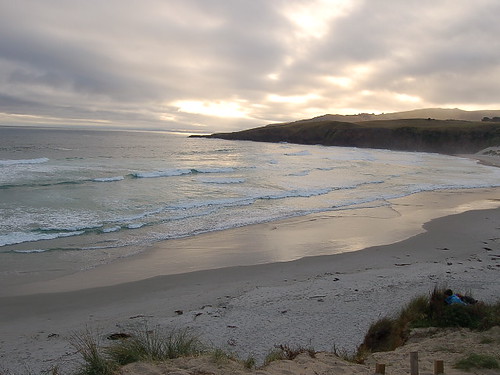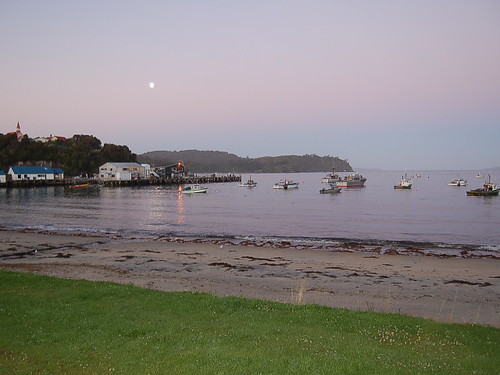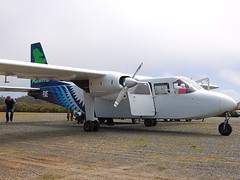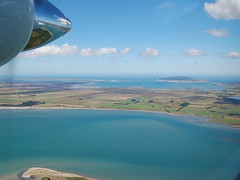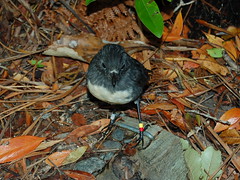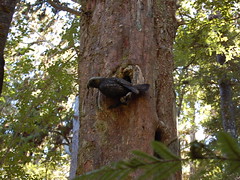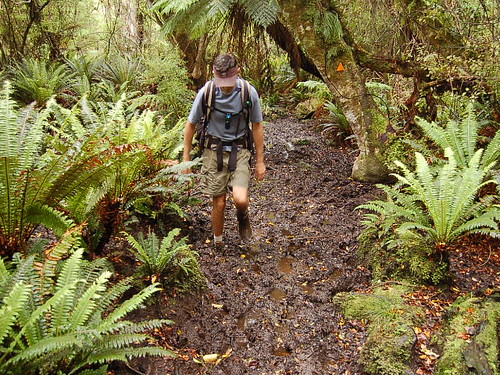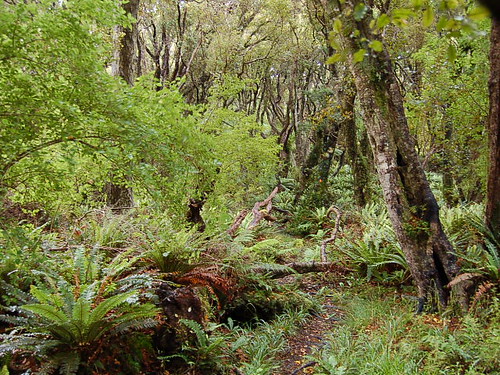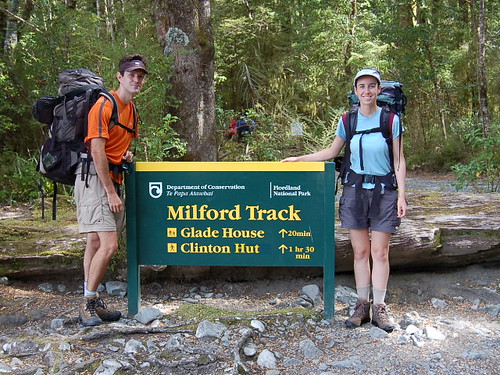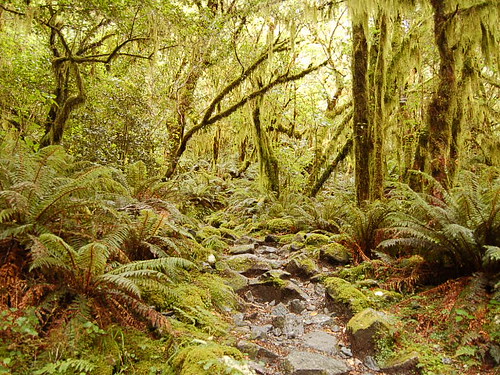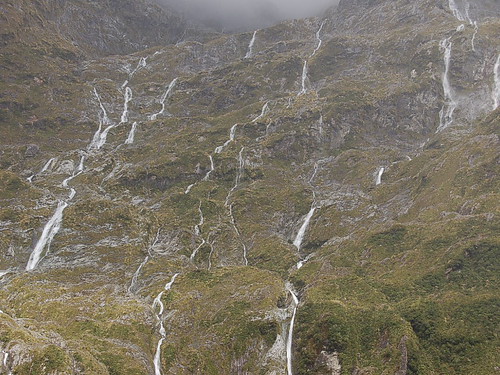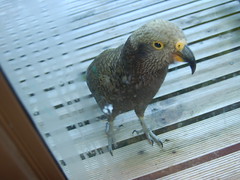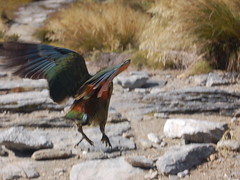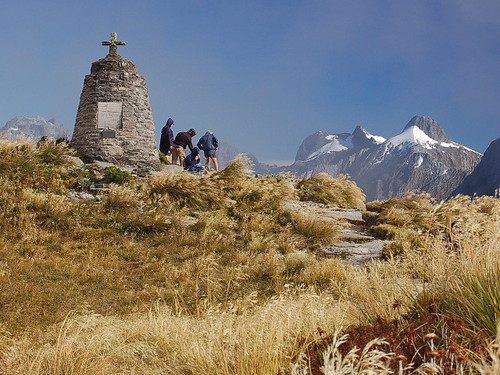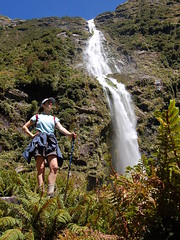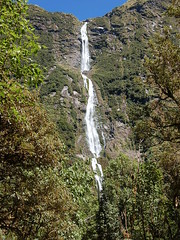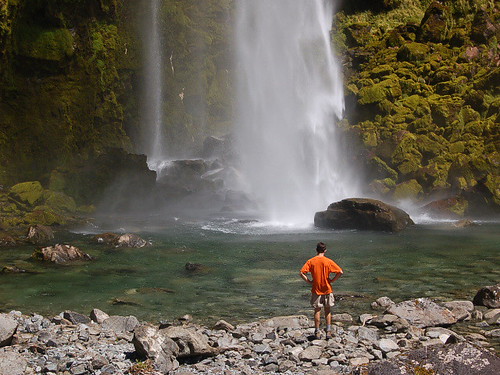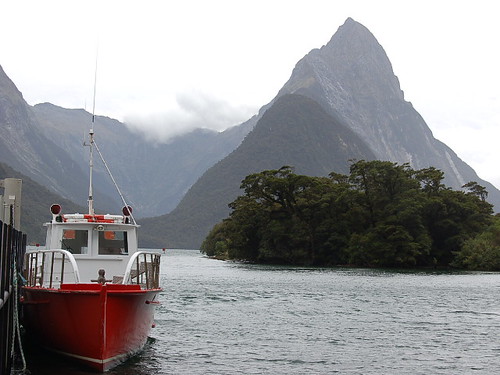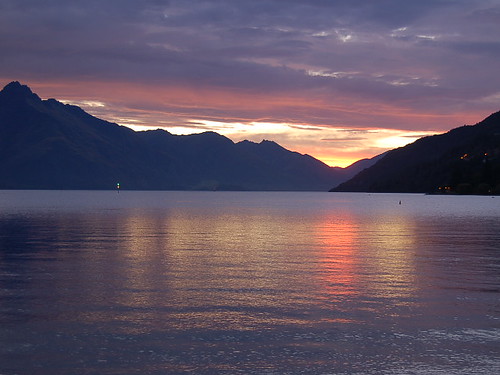Scotland in New Zealand?
(steve)
It was nice to arrive in Dunedin after the mud and isolation of Stewart Island. Our rental car blazed through the miles between Invercargill and Dunedin in only a few hours. We diligently stopped at the tourist locations marked on our map, and were rewarded with some interesting stuff and a couple of duds.
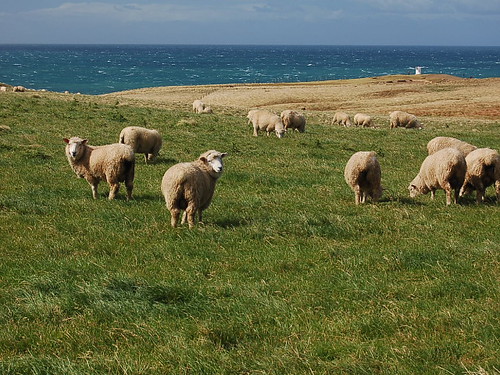
Interesting: petrified forest. This was a forest covered in a volcanic eruption near the ocean. Lots of logs disguised as rocks. Some of them looked very well preserved. Bonus: yellow eyed penguins! Nestled among the rocks surrounding the forest were a few nests of rare yellow eyed penguins. They were so cool to see up close (about 20 feet). They are the most endangered penguin species out there.
Interesting: slope point. Southern-most point in South Island. Strong winds.
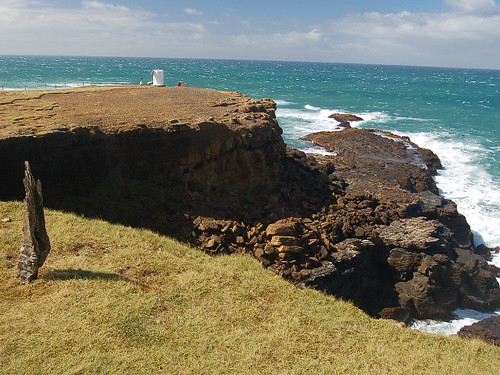
Not so interesting: Niagara Falls (of New Zealand). Our map suggested this feature would be something worth driving a few kms out of the way to see. Don't believe everything you read. This "fall" was a few rocks in a fairly slow moving stream. Not so amused walking back to the car.
Arriving in Dunedin was welcome. Civilisation return. Dunedin is the Scottish portion of New Zealand. Everyone here spoke with a variety of Scottish twist to the Kiwi accent. The city itself has a bit of European feel, with ornate architecture and sculptured gardens.
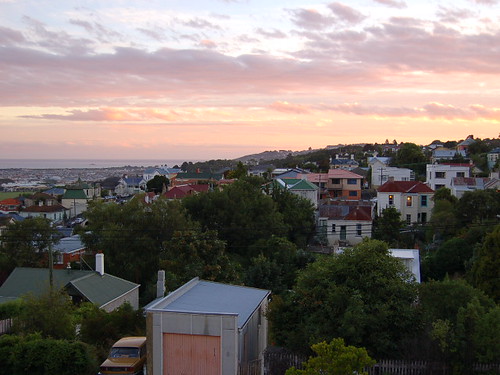
The town is also the home of the University of Otago, providing a young mind-set typical of college towns. We also had our first rugby experience as the Super 14 season started and the town went insane. I don't fully understand the rules, but it seems more entertaining than US "gridiron." The town was lots of fun and our favorite so far.
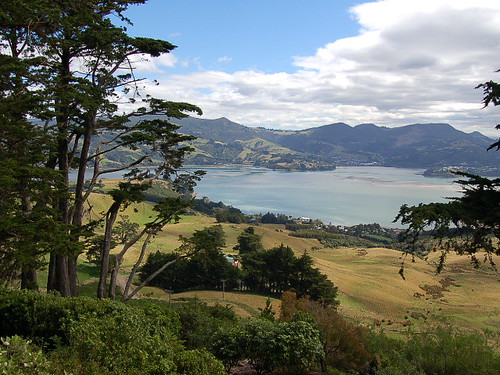
We also indulged in a few activities while here. They were albatross sighting (unsuccessful), yellow eyed penguin spotting, touring the Cadbury factory (Karen's smile didn't melt all day), toured Larnach castle, and basking in the town octagon.
